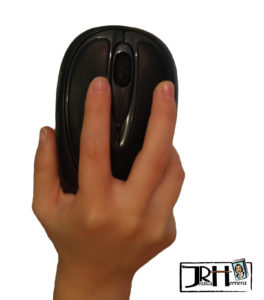 Computer Skills for Kindergarten and First Grade are Essential for School
Computer Skills for Kindergarten and First Grade are Essential for School
When I sent my five-year-old twin girls on the first day of kindergarten, I thought I had prepared them for everything they would encounter at school. We had gone over manners, uniforms, and school rules. We had poured over educational worksheets. Both of them had studied sight words, and we enjoyed time together playing math games like SUM SWAMP.
So, you can imagine my surprise when I received a note from their teacher that said my girls needed to learn computer skills. What?? They are in kindergarten! The letter went on to say that the school will be using computers for testing and it was essential for the kids to understand how to use a computer. It dawned on me that if they couldn’t use a computer, even if they knew the correct answers to the questions, my twins would get them wrong if they could not input them into a computer.
Thus, my new mission began; I needed to teach my kindergarteners essential computer skills.
I found an old laptop computer and factory reset it. I deleted all of the shortcuts from the computer’s desktop so that my girls wouldn’t accidentally click on anything. I installed a program called “TUX PAINT,” a free art program for kids, and OPEN OFFICE, a free word-processing program, because what good is trying to point and click if there is nothing to point and click?
The girls were a bundle of anticipation when placed in front of their new frontier. The first thing I learned was not all mice are created equal, and the ones with lots of buttons caused more frustration with wandering fingers. I had to try several different mice…mouses? Uh, you know what I mean, before I found one that worked well. It’s pretty obvious, but just so that you know, the wireless ones worked best. I kept seeing one of my kids with the wire in her mouth. Strange but true.
Afterward, I pointed to the letters on the keyboard. Then I told my kids which buttons to press and which should not be touched. All was fine and dandy, but they had no real reason to click on anything. The art program was fun, and they liked clicking random keys on the keyboard but was this the best I could do? I mean, what did I expect them to write a blog?
Finding Kid-Friendly Software
They needed reasons to click things. Otherwise, they wouldn’t learn why and how the buttons worked, which is why I chose to subscribe to abcmouse.com. (No, they do not pay me.) ABCMouse.com is where my girls could play fun educational games focused on their skill level. A good thing about them is they always have sales, and you can subscribe at a reasonable price. If you have no interest in paying for a subscription, remember that not all sites are created equal. You don’t want those wandering hands finding websites not meant for them. So it’s a good idea to add shortcuts to websites that you approve of, like https://pbskids.org/.
worked, which is why I chose to subscribe to abcmouse.com. (No, they do not pay me.) ABCMouse.com is where my girls could play fun educational games focused on their skill level. A good thing about them is they always have sales, and you can subscribe at a reasonable price. If you have no interest in paying for a subscription, remember that not all sites are created equal. You don’t want those wandering hands finding websites not meant for them. So it’s a good idea to add shortcuts to websites that you approve of, like https://pbskids.org/.
Typing Instructor is another fantastic program that helped my older daughter with proper finger placement on the keyboard. Now I believe that her faster typing skills would give her a more significant advantage when tested on a computer in the future. Speedier typing skills meant more time answering questions and less time searching for letters on the keyboard.
Summary:
Therefore, whether your child is in fifth or first, or yes, even kindergarten, a tablet is NOT the same as a keyboard and mouse. Computer skills are just one of the many skills they’ll need. Just remember to take it slow. Chances are you are going to hear things like, “Aagghhh! This mouse isn’t working! Hmph!” At which time, you’ll need to point out that they are holding the mouse backward or upside down. Prepare yourself beforehand by having the software, hardware, earphones, and shortcuts ready for your new little pupil.
We can help our teachers out. They shouldn’t have to teach a class full of hyper kids what a mouse is for; they have enough to do. So, here’s to happy clicking.
More tips:
- Wireless mice are easier.
- Remind them liquids and computers are NOT friends.
- Set up desktop shortcuts to places they are allowed to visit online or to programs they can use.
- Hide the recycle bin. (Google how to do that.)
- Set up a child profile; that way, they don’t have the same permissions as administrators. Or better yet, let them use a computer that you don’t care if they mess it up. If not, keep your files somewhere they can’t easily access them.
- Buy headphones, but make sure they are comfortable and fit. Too small or too big, and they will become dust collectors.
- Find programs for them to use.
- Install anti-virus software.
- Put the computer in a place where you can see at a glance what is on their screen.
- Set time limits for computer usage.
- Remember to regularly disinfect the keyboard and mouse while it’s not on, with wipes explicitly made for computers.
- Show your kids how to minimize and maximize the window.
Remember, clicking is a skill too! I hope this post helps you to teach your kids how to use a computer.
Update: My kids have grown since this post; I’m happy to report, so now we are using Adventure Academy from the creators of ABCMOUSE.com. Adventure Academy is for older children. It’s packed full of awesome videos, books, and games, but the best part is it is also educational so that the kiddos can be learning simultaneously.
Do you have any tips, programs your kids like, or comments? Thanks for hanging out here. If you click on the links and purchase any of the items linked to this page, I get a small payment from Amazon that keeps this blogger blogging.
